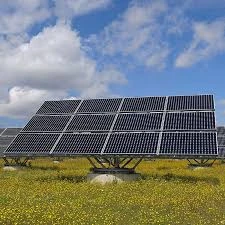Current Prices for Polycrystalline Solar Panels and Market Trends
The Current Landscape of Poly Solar Panel Prices
In recent years, the renewable energy sector has gained considerable traction, with solar energy leading the way as one of the most accessible and practical forms of energy for both residential and commercial use. Among the various types of solar panels available, polycrystalline solar panels, often referred to as poly solar panels, have become increasingly popular due to their affordability and efficiency. This article delves into the current landscape of poly solar panel prices, exploring the factors influencing these prices, market trends, and future projections.
Understanding Poly Solar Panels
Polycrystalline solar panels are made from multiple silicon crystals, giving them a characteristic blue hue. Unlike their monocrystalline counterparts, which are made from a single silicon crystal, poly panels are typically less efficient but are more cost-effective. They are known for their durability and performance in high-temperature environments, making them a favored choice for many homeowners and businesses.
Price Trends
As of late 2023, poly solar panel prices have shown a notable decline over the past decade, primarily driven by advancements in manufacturing technologies and the increasing demand for solar energy worldwide. The average price for poly solar panels can range from $0.50 to $0.90 per watt, depending on the brand, efficiency, and purchase quantity. This represents a significant reduction compared to earlier years when the cost could reach up to $1.50 per watt.
Factors Influencing Prices
Several factors contribute to the fluctuating prices of poly solar panels
1. Supply and Demand The solar market has seen a surge in demand, driven by both regulatory incentives and a growing awareness of climate change. This increase in demand can put pressure on supply chains, which may lead to price adjustments.
2. Manufacturing Costs Improvements in manufacturing processes have reduced costs significantly. Innovations such as automation and scale production have allowed manufacturers to produce poly solar panels more efficiently, thereby lowering prices.
poly solar panel price

3. Materials The cost of raw materials, particularly silicon, has a direct impact on solar panel prices. The global silicon market's dynamics—affected by mining costs, trade policies, and production levels—also play a critical role.
4. Import Tariffs Trade policies and tariffs can influence pricing. For example, certain countries may impose tariffs on imported solar panels, which can increase prices in affected markets, creating local price fluctuations.
5. Government Incentives Subsidies, tax credits, and financial incentives provided by various governments to promote renewable energy can also affect pricing. Regions with robust incentive programs can often see lower prices due to increased adoption rates.
Market Trends
The global poly solar panel market is expected to continue evolving. As of now, the shift towards integrated solar solutions, such as solar roofs and building-integrated photovoltaics (BIPV), is gaining momentum. This trend encourages manufacturers to innovate and offer products that can seamlessly blend with building materials, potentially influencing the price landscape of traditional panels.
Additionally, as storage technology advances, the integration of batteries with solar systems provides consumers with greater energy independence. This combination can justify a higher upfront investment, but it could also lead to lower overall costs in the long term due to decreased dependency on grid power.
Future Projections
Looking ahead, industry experts predict that poly solar panel prices will likely stabilize as the market matures. While gradual price decreases are expected as technology improves and production scales up, these panels may become part of a more complex price model that includes energy production contracts and lifecycle costs.
Solar energy continues to be a significant player in the transition towards sustainable energy solutions. As environmental concerns mount and technological innovations emerge, poly solar panels will remain an economical choice for many looking to harness the power of the sun.
In conclusion, the landscape of poly solar panel prices reflects a combination of market dynamics, technological advancements, and consumer demand. With a promising outlook, poly solar panels will likely play a crucial role in the global shift towards renewable energy solutions, providing affordable and efficient energy alternatives for a sustainable future.
-
Unlocking Energy Freedom with the Off Grid Solar InverterNewsJun.06,2025
-
Unlock More Solar Power with a High-Efficiency Bifacial Solar PanelNewsJun.06,2025
-
Power Your Future with High-Efficiency Monocrystalline Solar PanelsNewsJun.06,2025
-
Next-Gen Solar Power Starts with Micro Solar InvertersNewsJun.06,2025
-
Harnessing Peak Efficiency with the On Grid Solar InverterNewsJun.06,2025
-
Discover Unmatched Efficiency with the Latest String Solar InverterNewsJun.06,2025







